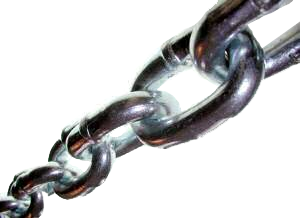A back link is an incoming hyperlink from one web page to another website.
the more backlinks you have pointing back to your site, the more popular it will be.
You have probably asked yourself, many times, ''what backlinks should I build to my website for best SEO results?''
The old times all types of backlinks were considered
good for SEO . For years, many webmasters relied on sloppy
techniques, and used automated tools to build hundreds of backlinks
every day. Things have changed a lot since then.
In today’s SEO, high quality and relevant backlinks weight the most value.
But how do you build good backlinks?!
By using the right strategy here are some tips you should follow to get good
backlinks to your website with best examples and free ways to do it.
- Create your own blog (Link it or incorporate it to your website)
- Create other blogs (best free bolg hosted domains are
- WordPress.com
- Blogger (owned by Google. ...)
- Tumblr.
- Create social pages on main social networks websites
Also here we have google+ (to keep same platform as the blog and easy likable with the blog), second position goes to Facebook and third to Linkedin.
- Start searching for valid website directories and submit your website and here thigs are getting complicate as a relevant list is not yet available we can advice you to try:
- Dmoz
- www.alexa.com
- Other directory websites
Warning :
Here is a glossary of common terms related to backlinks that you should know:
- Link Juice: When a webpage links to any of your articles or your website’s homepage, it passes “link juice”. This link juice helps with the ranking of the article, and also improves the domain authority. As a blogger, you can stop passing link juice by using a no-follow tag.
- No-Follow Link: When a website links to another website, but the link has a no-follow tag, that
link does not pass link juice. No-follow links are not useful
concerning the ranking of a page as they do not contribute anything. In
general, a webmaster uses the no-follow tag when he/she is linking out
to an unreliable site.
- Example: Links from comments on other blogs.
- Do-Follow Link: By default, all the links that you add into a blog post are do-follow links, and these pass link juice.
- Linking Root Domains: This refers to the number of backlinks coming into your website from a unique domain. Even if a website has linked to your website ten times, it will only be considered as one linked root domain.
- Low-Quality Links: Low-quality links are links that come from harvested sites, automated sites, spam sites, or even porn sites. Such links do far more harm than good. This is one reason you should be careful when buying backlinks.
- Internal Links: Links that are going from one page to another within the same domain are called internal links. The process itself is referred to as internal linking or interlinking.
- Anchor Text: Text that is used for hyperlinks is called anchor text. Anchor text backlinks work great when you are trying to rank for particular keywords.


No comments:
Post a Comment